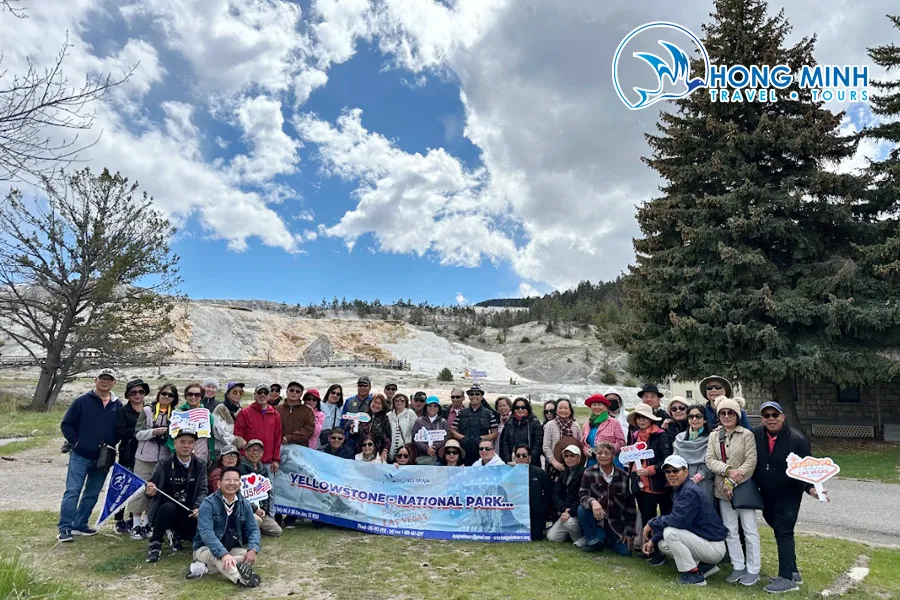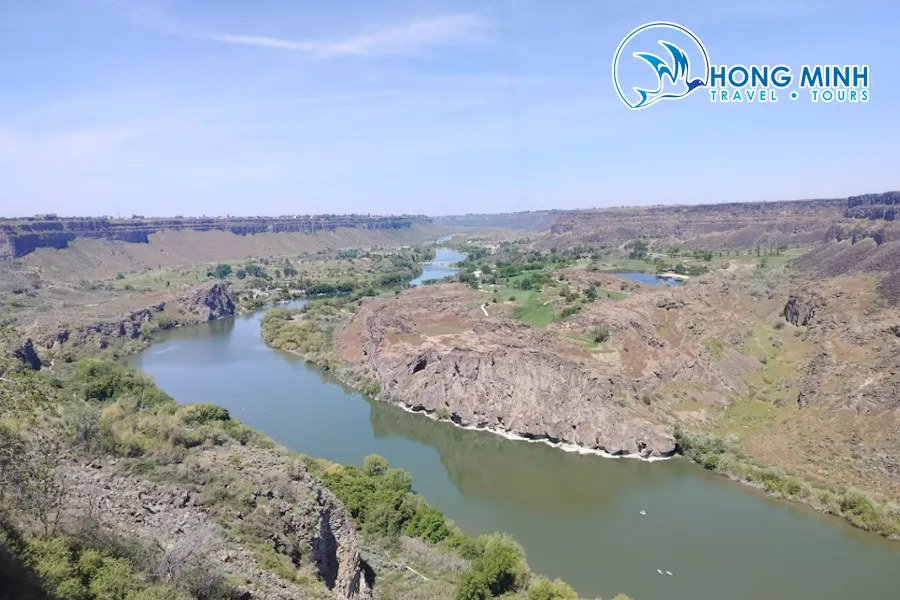Montana, with its pristine beauty and majestic mountains, dense forests, and winding rivers, is a dream destination for nature and wildlife enthusiasts. Renowned not only for the magnificent Yellowstone National Park but also as home to numerous rare animal species, including moose—a symbol of North American strength and natural beauty. If you are passionate about exploration and eager to witness these extraordinary animals in their natural habitat, Montana is an unmissable destination.
This article will guide you to the areas in Montana with the highest moose populations, offering you incredible opportunities to immerse yourself in the wilderness and capture unforgettable moments with this iconic animal. We will explore national parks, nature reserves, and wildlands where moose thrive and flourish. Prepare for an exciting journey and unforgettable experiences in Montana, the land of giant moose!
Yellowstone National Park: A Must-Visit for Moose Lovers
Yellowstone National Park, the world’s first national park, is not only famous for its geysers and unique geothermal landscapes but also one of the areas with the highest moose density in Montana. With its vast area and diverse ecosystems, Yellowstone provides an ideal habitat for these animals.
In Yellowstone, moose are commonly seen in meadows, along rivers and lakes, especially in the early morning and late afternoon. Visitors can easily spot them while driving along park roads or hiking trails. Some famous spots for moose viewing in Yellowstone include:
- Hayden Valley: Located in the heart of Yellowstone, Hayden Valley is a vast meadow alongside the Yellowstone River. It’s an ideal habitat for moose, especially in summer when the grass is lush and green. You can easily observe moose from a distance using binoculars or spotting scopes.
- Yellowstone Lake: The shores of Yellowstone Lake, particularly the northern and eastern areas, are also home to many moose. The lakeside forests and surrounding meadows provide food and safe shelter for them.
- Mammoth Hot Springs Area: While famous for its travertine hot springs, the Mammoth Hot Springs area also has meadows and shrubby areas that attract moose. Be observant as you explore this region.
To increase your chances of seeing moose in Yellowstone, you should:
- Go in the early morning or late afternoon: This is when moose are most active and easiest to spot.
- Use binoculars or a spotting scope: This helps you observe moose from a distance without disturbing them.
- Maintain a safe distance: Moose are wild animals and can become aggressive if they feel threatened. Always keep a safe distance and do not approach too closely.
- Join guided tours: Local guides are experienced and know the best spots for moose viewing, while also ensuring your safety.

Glacier National Park: Untamed Beauty and Moose
Glacier National Park, located in northwest Montana, is another gem of the state and one of the areas with a healthy moose population. With majestic mountains, pristine lakes, and vast pine forests, Glacier offers stunning natural scenery and an ideal habitat for moose.
In Glacier, moose are often found in lakeside areas, along rivers, and in forested valleys. Some popular spots for moose viewing in Glacier include:
- Lake McDonald: The largest lake in Glacier, Lake McDonald, and its surrounding area are home to many moose. You can take a boat tour on the lake or hike along the shoreline to look for them.
- Many Glacier Valley: Many Glacier Valley, with its glacial lakes and alpine meadows, is a popular destination for moose viewing. Hike the trails around Swiftcurrent Lake and Lake Josephine for a chance to encounter these animals.
- Two Medicine Area: The Two Medicine area in southeast Glacier is also a great place to spot moose. Explore the hiking trails and observe carefully in riverside and lakeside areas.
Similar to Yellowstone, for the best moose viewing experience in Glacier, you should:
- Visit in summer or early fall: This is when the weather is mild and moose are actively moving around.
- Go hiking: Many trails in Glacier lead to areas inhabited by moose. Choose trails that suit your fitness level and bring plenty of water and snacks.
- Participate in ranger-led programs: Glacier National Park often hosts ranger-led programs about wildlife, including moose. This is a fantastic opportunity to learn more about these animals and be guided to the best viewing locations.

Seeley-Swan Valley: A Hidden Moose Paradise
The Seeley-Swan Valley, located in western Montana between Glacier National Park and Missoula, is less known than Yellowstone and Glacier, but it is one of the areas with the highest moose density in the state. This valley is surrounded by the Swan Range and the Mission Mountains, with numerous lakes, rivers, and dense forests, creating an ideal habitat for moose.
Seeley-Swan Valley is a perfect destination for those seeking a peaceful and less crowded moose viewing experience. Some good spots to see moose in this area include:
- Seeley Lake and Swan Lake: These lakes and the surrounding wetlands are home to many moose. You can rent kayaks or canoes to explore the lakes and observe moose from the water.
- Highway 83: This highway runs along the Seeley-Swan Valley and offers many opportunities to spot moose from your car. Drive slowly and watch carefully on both sides of the road, especially in the early morning and late afternoon.
- National Forests: The Seeley-Swan Valley is surrounded by Flathead National Forest and Lolo National Forest. These forests have numerous hiking trails and are moose habitats.
When exploring Seeley-Swan Valley for moose viewing, keep in mind:
- Respect the wilderness: This area retains its pristine and quiet nature. Keep it clean, avoid loud noises, and do not disturb wildlife.
- Prepare for changing weather: Weather in Montana’s mountains can change quickly. Bring warm clothing, rain gear, and sunscreen.
- Inform someone of your plans: If you are hiking or exploring remote areas, inform family or friends of your plans and expected return time.

Tips for Successful and Safe Moose Viewing
Watching moose in their natural environment is an exciting and memorable experience, but it also requires preparation and adherence to safety guidelines. Here are some tips to help you increase your chances of successful moose viewing and ensure your safety and the animals’ well-being:
- Learn about moose behavior: Moose are herbivores, typically active in the early morning and late afternoon. They prefer habitats near water, such as riverside meadows, lakes, and swamps. Understanding their behavior will help you know where and when to look.
- Use viewing aids: Binoculars and spotting scopes are essential tools for viewing moose from a distance. Cameras with telephoto lenses are also very useful for capturing beautiful moments with these animals.
- Stay quiet and move slowly: Moose have excellent hearing and sense of smell. Stay quiet and move slowly when you are in an area where moose might be present. Avoid making loud noises or strong scents that could scare them away.
- Observe from a distance: Never approach moose too closely. Maintain a distance of at least 25 meters (75 feet) to ensure your safety and avoid disturbing them.
- Pay attention to warning signs: Moose can become aggressive, especially cows protecting their calves or during the mating season. Watch for warning signs such as a cow stomping her feet, tilting her head, or a bull grunting. If you notice any of these signs, back away slowly and maintain a safe distance.
- Do not feed moose: Feeding wild animals is harmful to them. Human food may not be suitable for a moose’s digestive system and can make them dependent on humans, losing their natural instincts.
- Report moose in danger: If you see an injured, trapped, or behaving abnormally moose, report it to park rangers or local wildlife authorities.
Conclusion
Montana is truly a paradise for moose lovers. From world-renowned Yellowstone National Park and majestic Glacier National Park to the peaceful Seeley-Swan Valley, there are many wonderful areas for you to explore and admire these iconic animals in their natural habitat.
Hopefully, this article has provided you with useful information and sparked your passion for exploring Montana’s wilderness. Plan your trip today and prepare for unforgettable moose viewing experiences in this beautiful state! Wishing you a safe journey filled with memorable moments!